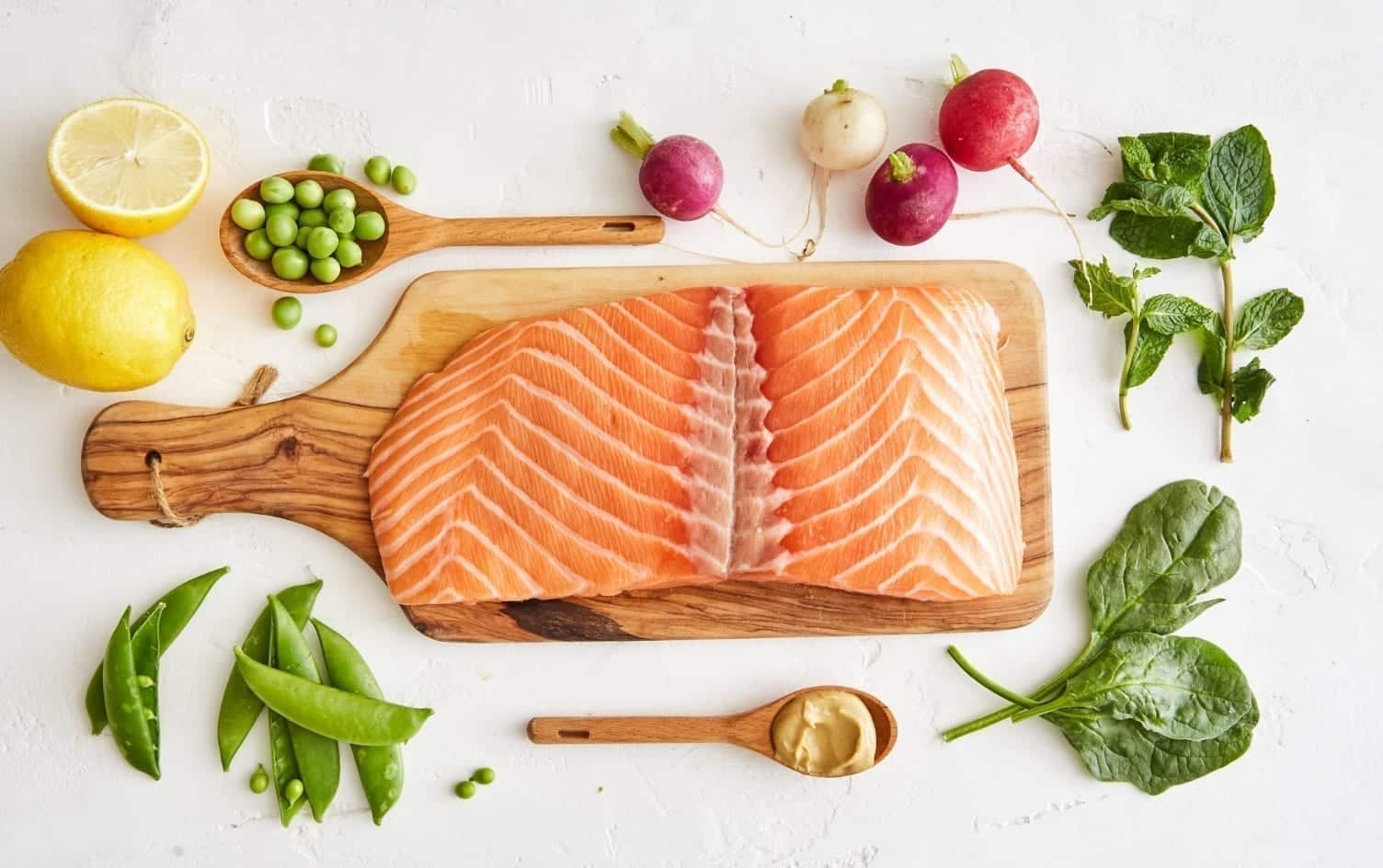Adding more protein to your diet is a great way to feel satiated, build muscle and help with weight loss. While classic sources include chicken, fish and lean beef, another great source is lean wild meat.
“Wild game is unique because the food these animals consume is the food they are naturally inclined to eat, such as grass, bugs and other plants. This results in a more nutrient-dense and leaner meat compared to farmed meats, which are primarily fed grain,” says Kelly Hogan, a registered dietitian based in New York City.
In addition to being good for the environment and budget-friendly, consuming wild game can diversify your diet, improving overall health.
THE HEALTH BENEFITS
Many wild meats are an excellent source of lean protein rich in vitamins and minerals like B vitamins and iron, which support many bodily processes on the cellular level and serves as building blocks for red blood cells.
Since wild game tend to be lower in “unhealthy” saturated fat (and some are also higher in “healthy” polyunsaturated fat), swapping it for traditional meat like beef and pork (which tend to be high in saturated fat) is a smart move, particularly if you’re at risk for high cholesterol or heart disease, notes Hogan.
Here, nine lean wild meats to try, along with their nutrition callouts per 4-ounce/100-gram serving:
LEAN WILD MEATS TO TRY
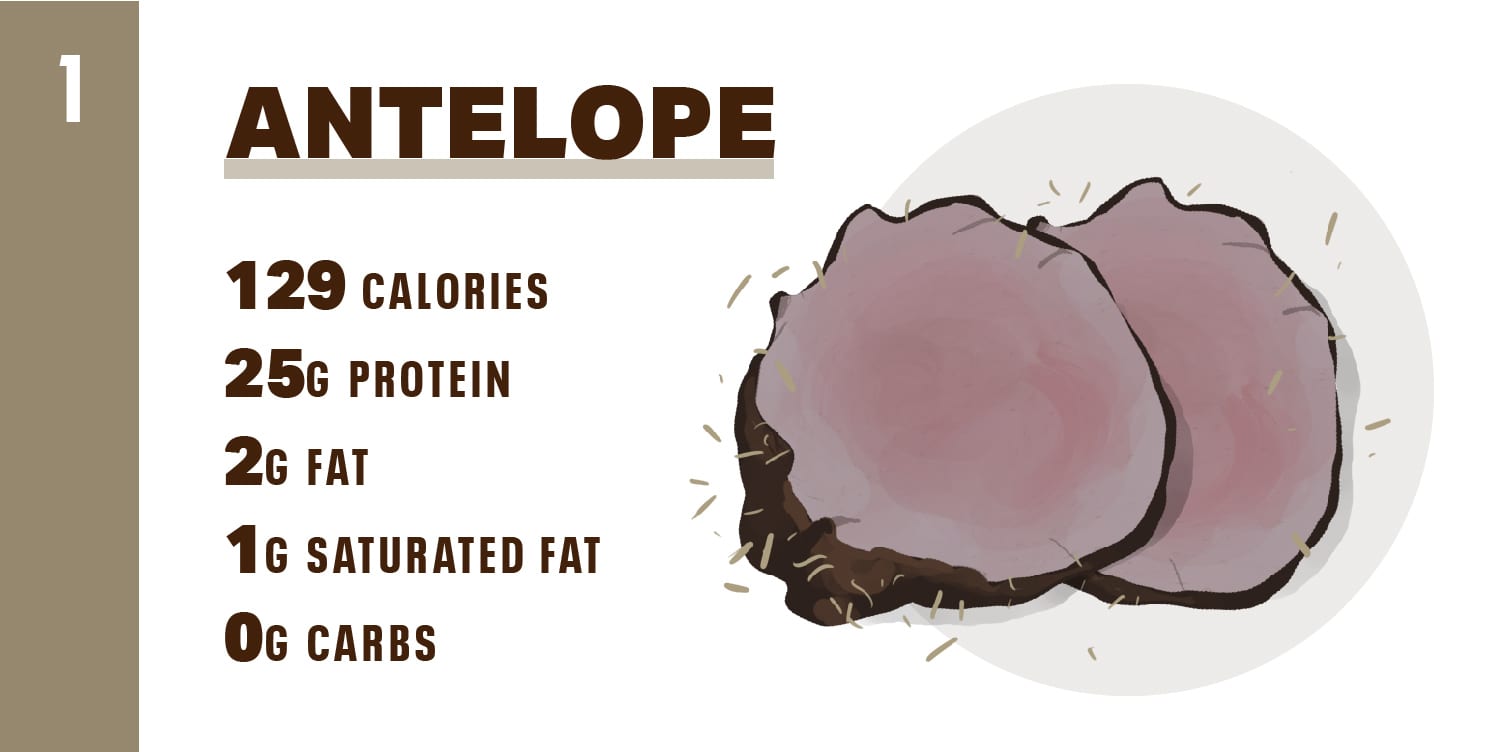
You might be surprised to learn antelope — the fastest land mammals in North America — are in the same family as cows, sheep and goats. Similar in taste and nutrition to venison and elk, “antelope is the best of both worlds,” says Amanda A. Kostro Miller, RD. “It’s lean, low in calories and high in protein, like poultry, but contains many of the great vitamins and minerals found in beef, such as B vitamins and iron.”

Ordering a bison burger doesn’t just sound cool — it’s also a healthy swap for traditional beef with a slightly sweeter taste. While beef contains 17 grams of fat per 4-ounce serving, bison (aka buffalo) only has 6 grams of fat and nearly half the amount of saturated fat found in beef. “Bison is less gamey in flavor compared to some other wild lean meats and makes for a smart substitute for beef in burgers and chilies,” says Hogan.
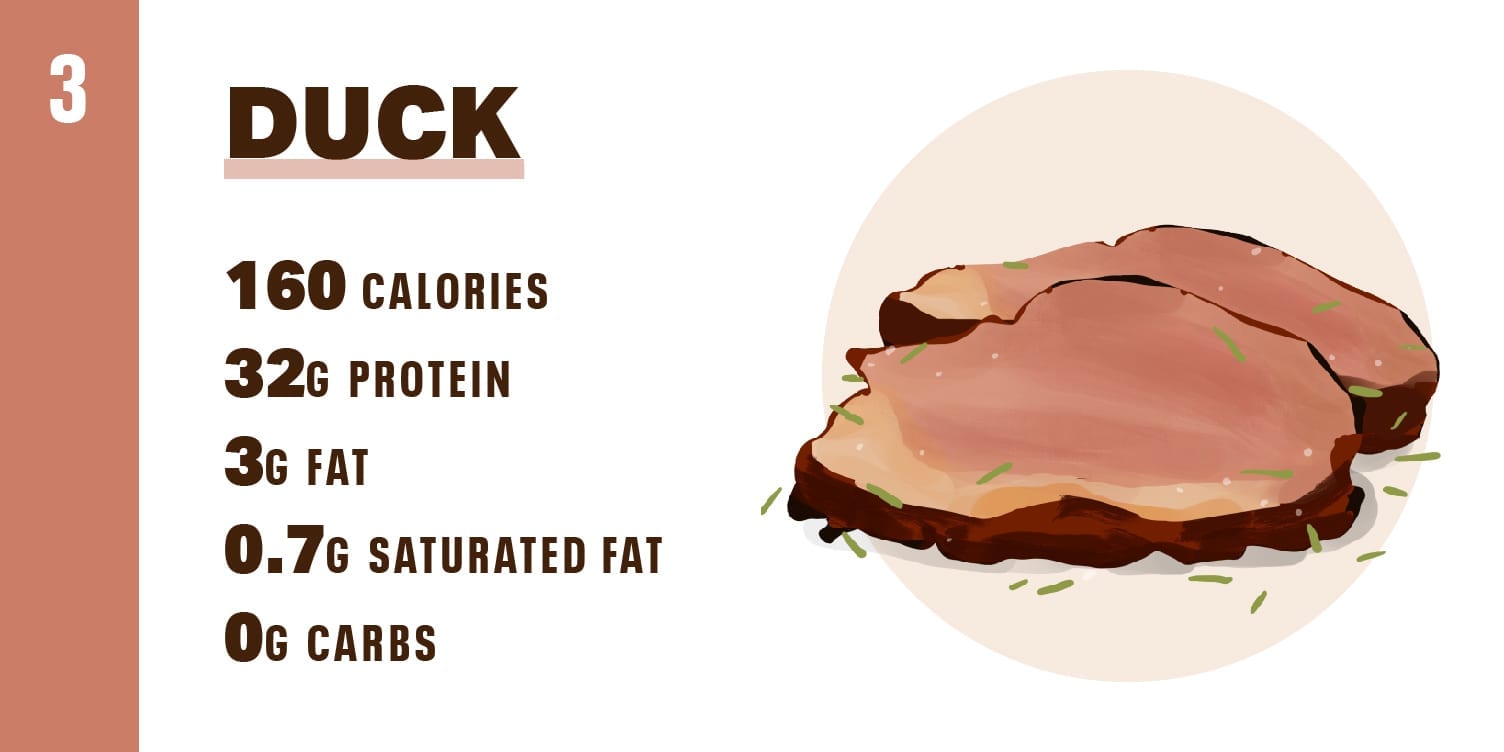
Duck is a lean meat similar in fat and calories to skinless chicken or turkey breast. It’s also an excellent source of selenium and zinc, minerals which help keep skin healthy and fight against inflammation from free radicals. Duck is also higher in iron compared to other poultry. Similar to chicken or turkey, you can roast a duck whole to save money and time for meal prep. It’s also delicious in stews, salads and sandwiches.
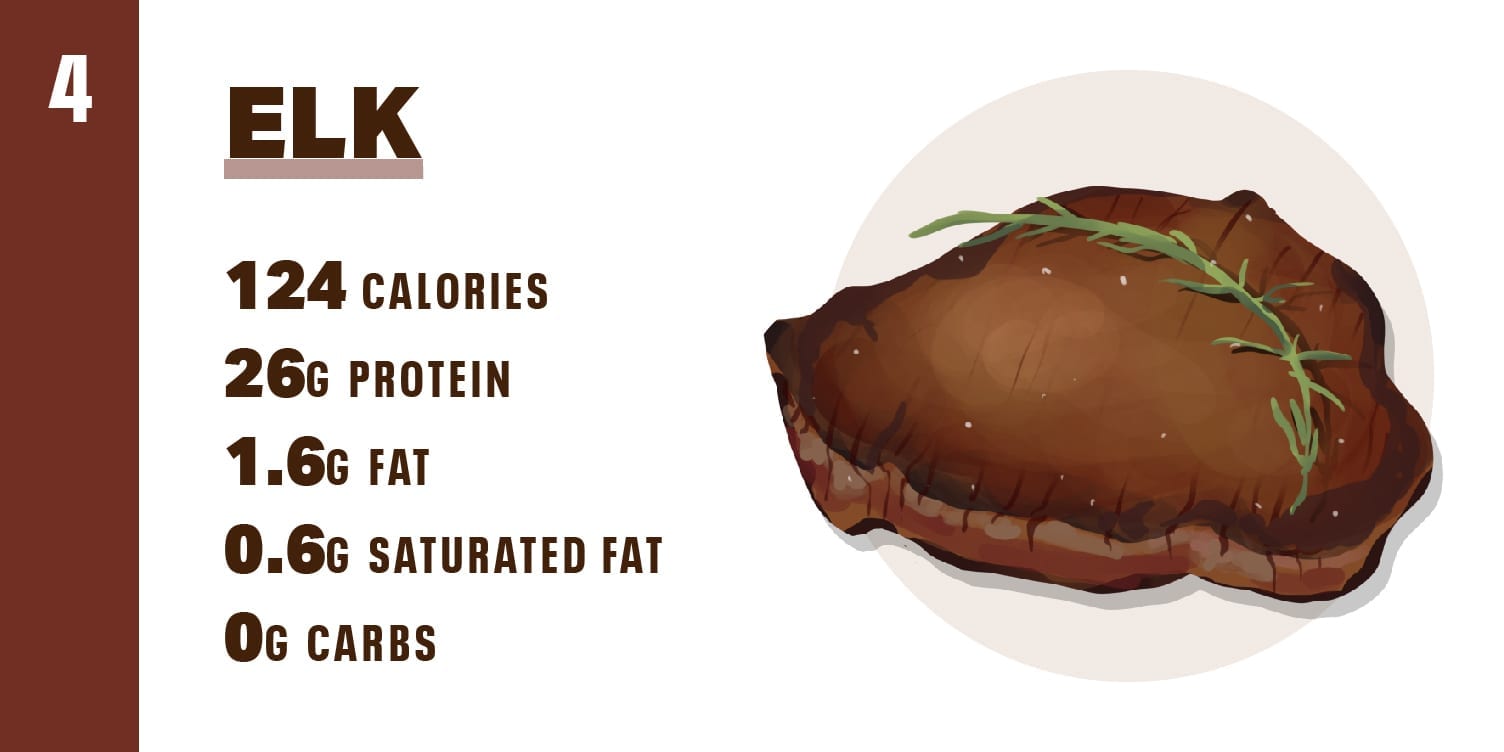
The larger cousin to deer, elk has similar perks when it comes to nutrition. It’s high in B vitamins and iron and has less unhealthy saturated fats and more protein per ounce compared to conventional beef. Better yet, many people like elk for its sweeter, less gamey taste and, as Kostro Miller notes, elk has even less fat than venison — so, it’s a really lean cut of meat.
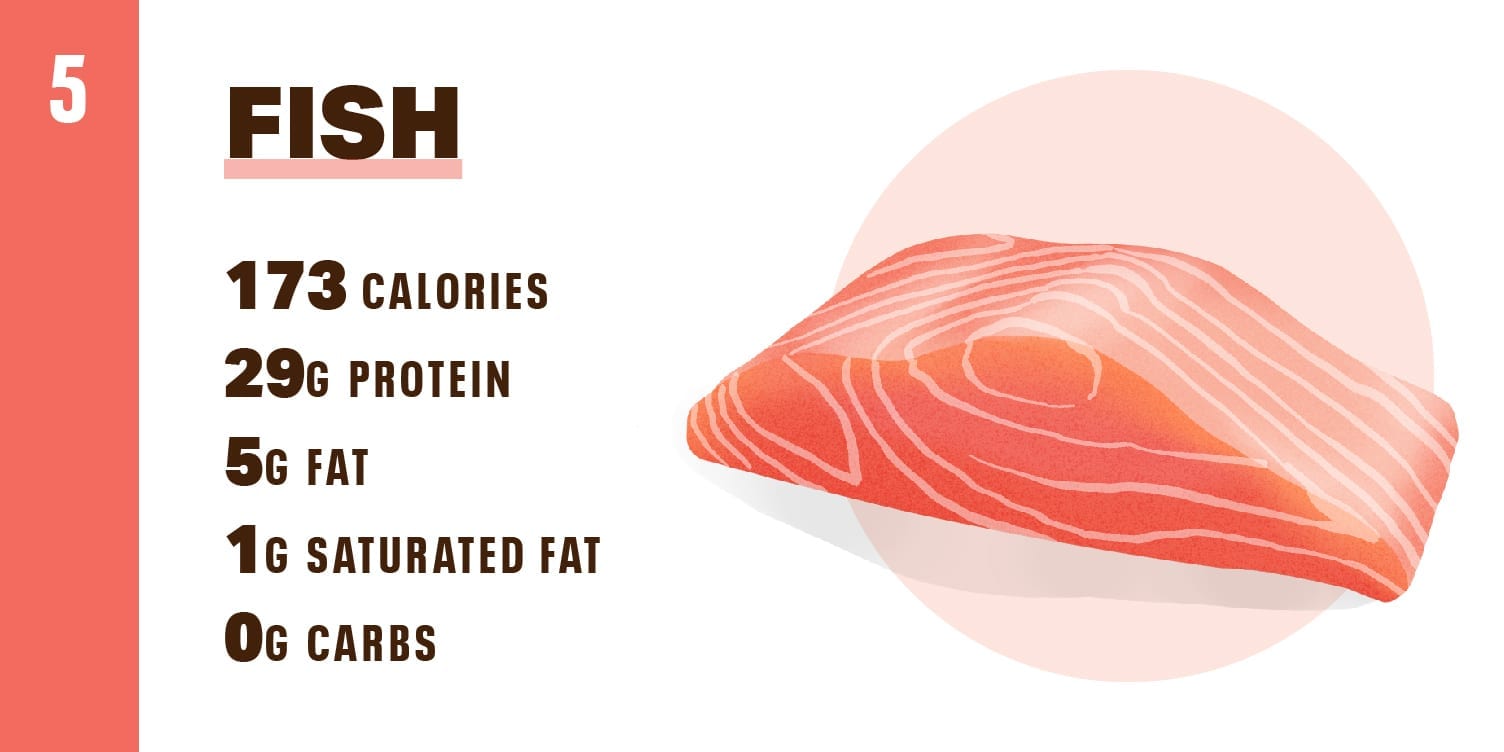
Fish can be great for weight loss and many contain healthy omega-3 fats, which support brain health. Wild-caught fish is often more environmentally friendly than its farmed counterpart. Also, because fish in the wild eat a natural diet, they tend to be slightly lower in saturated fat than farm-raised varieties.
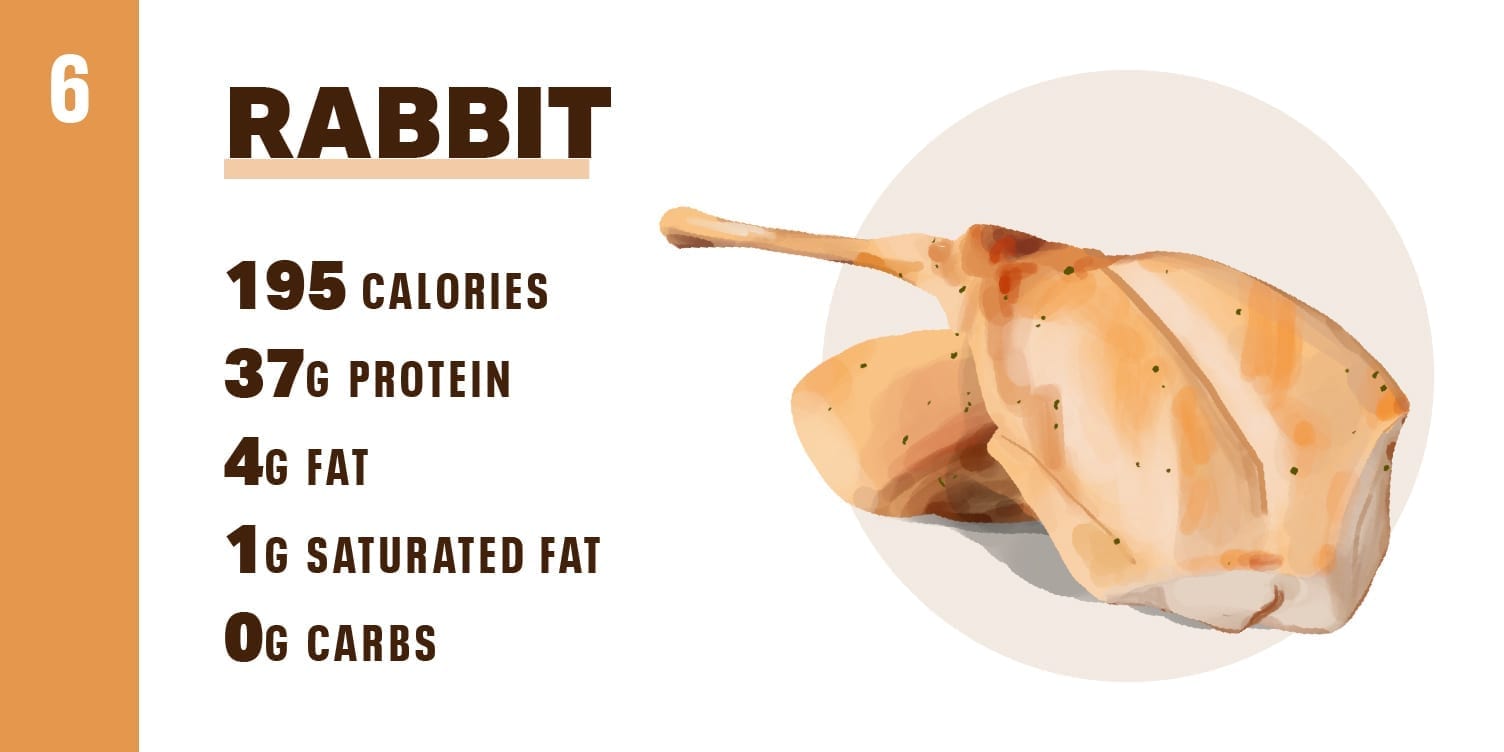
Rabbit may be the most underrated meat in America. Yes, rabbits are often pets, but they’re also a staple of many cuisines worldwide. Similar in taste to chicken yet sweeter and leaner, rabbit can be found on Southern dinner tables and on the menu in French, Italian and Chinese restaurants as well. “Rabbit is low in fat with just 3 grams per serving (and only 0.9 grams of saturated fat),” says Hogan. And if you’re trying to up your protein intake, rabbit is actually higher in protein than chicken and beef.
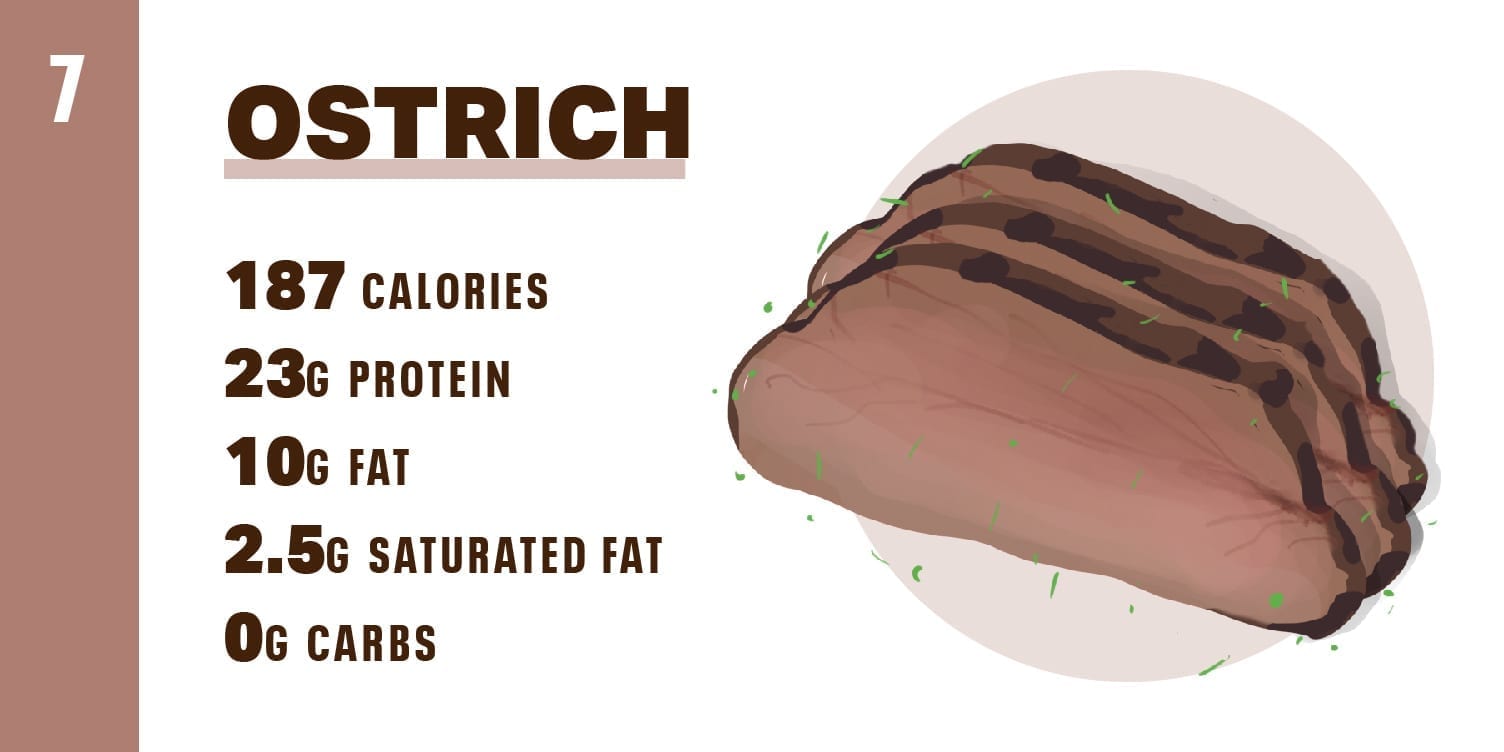
Ostrich is a red meat that tastes more like beef than poultry. “While ostrich tends to be more expensive than domestic meats, the main perk is that it’s lower in fat than both chicken and beef,” says Hogan. Like some other wild lean meats, ostrich can become tough due to its relatively low fat content, so opt for a roasting bag to seal in juices or substitute it for beef in a sauce or stew.
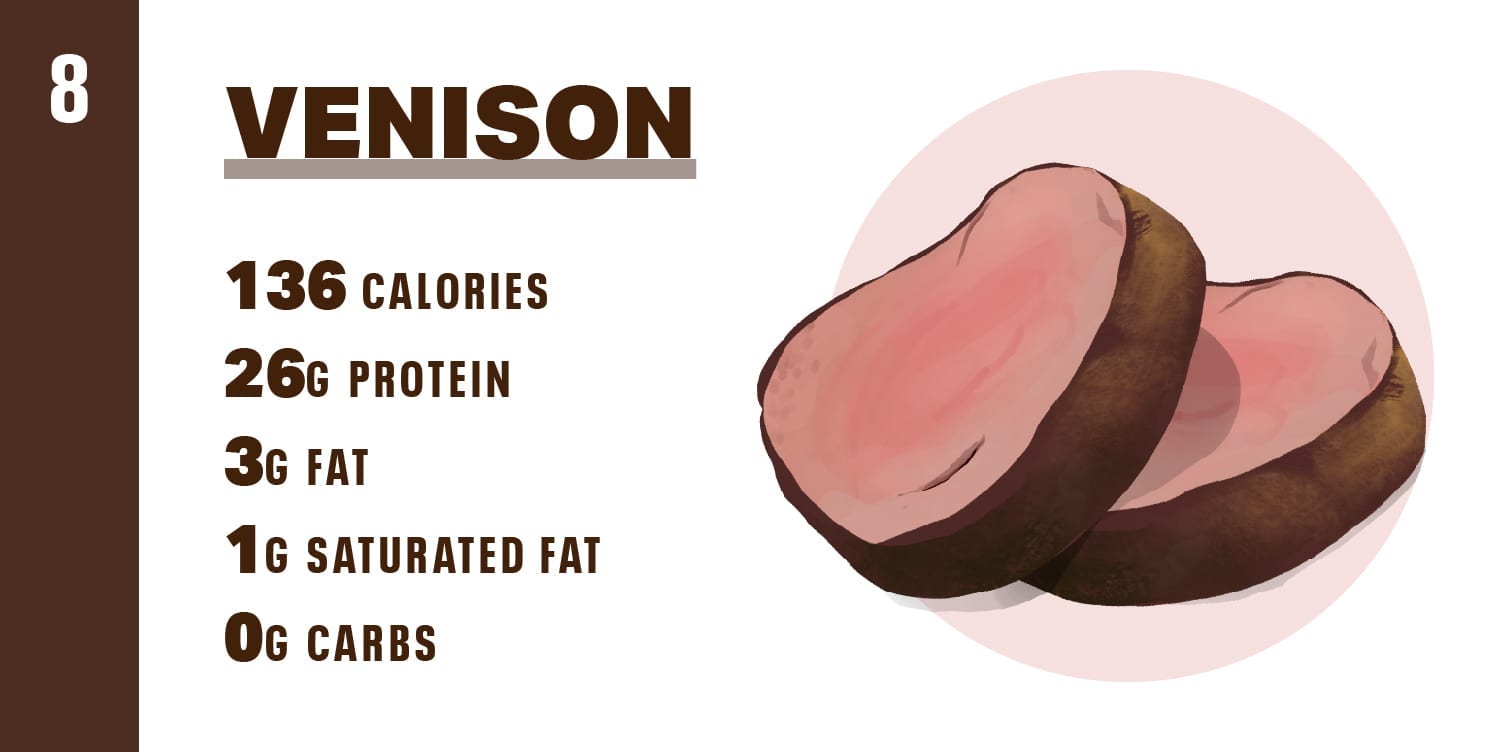
Technically, “venison” encompasses numerous types of meat (antelope and elk included) but this phrase most often refers to deer meat. “Compared to beef, venison is lower in fat and calories, and has more protein per ounce,” says Kostro Miller. It’s also a great source of B vitamins and iron, with 19 percent of the daily value based on a 2,000-calorie diet in one serving.
As is true for many wild game meats, venison tends to have a firmer texture and earthier taste than beef and makes for a popular jerky, barbeque or stew meat. Venison steak is worth a try, too, as it contains up to five times the healthy polyunsaturated fats compared to traditional beef and is just as (if not more) juicy and flavorful.
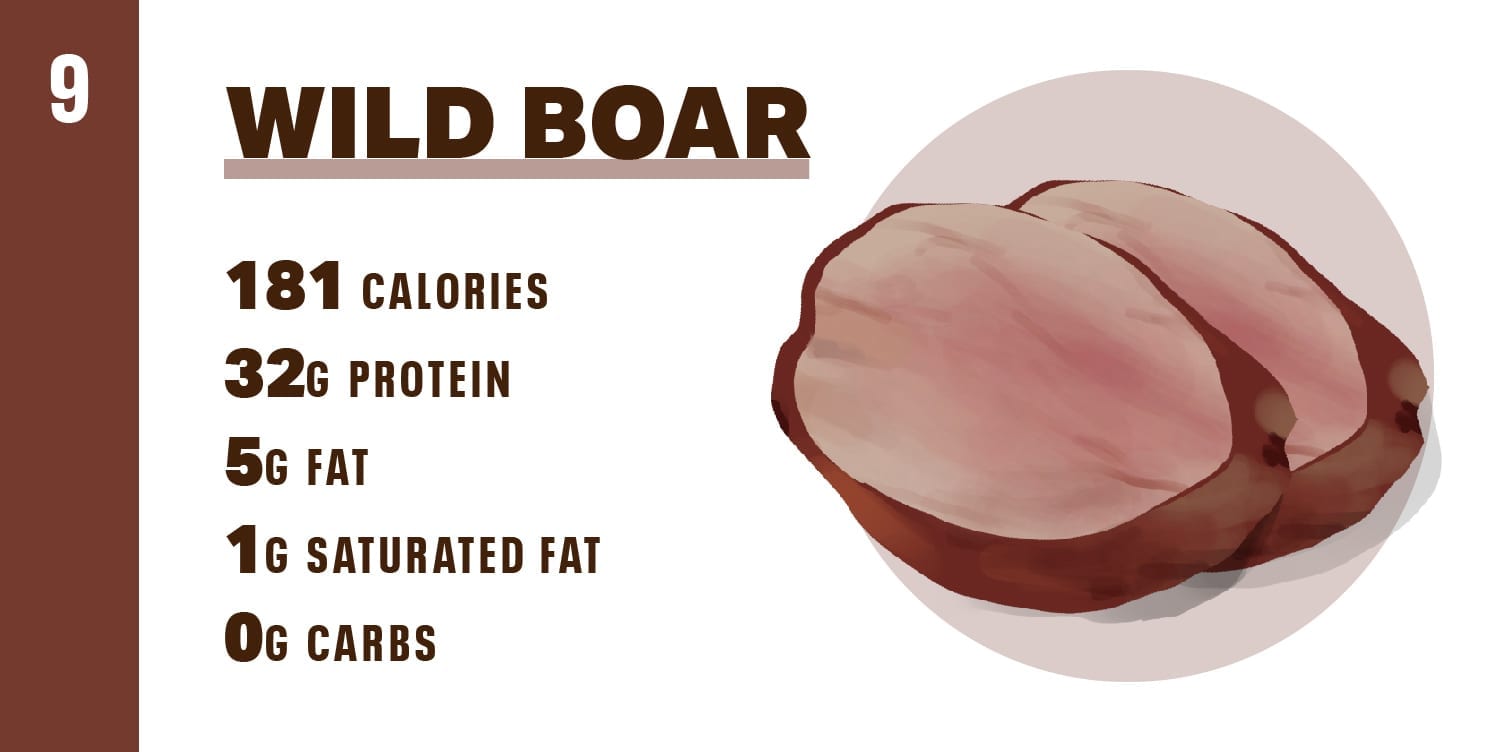
Wild boars, aka feral pigs, don’t have the best reputation. They’re an invasive species infamous for digging up roots and causing billions of dollars in damage annually. When it comes to meat, though, wild boar is celebrated as a juicy delicacy somewhere between pork and beef in terms of flavor. Wild boar is also a “very lean meat that’s a good source of iron, B vitamins and zinc,” says Hogan. Since it’s lower in fat, it cooks quicker than pork and is delicious in sliders, grilled or served with barbecue dishes.
Discover hundreds of healthy recipes — from high protein to low carb — via “Recipe Discovery” in the MyFitnessPal app.
